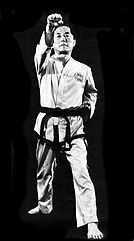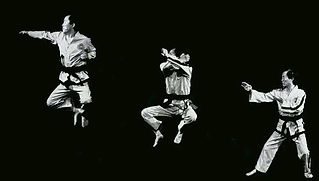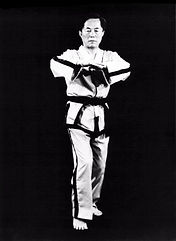

T.
I.
F.
TUL
UL

"Here I leave Taekwon-Do for mankind as a trace of man of the late 20th century".
The 24 patterns represent 24 hours, one day, or all my life.
-- General Choi Hong Hi
Belt Meanings

Signifies innocence, as that of the beginning student who has no previous knowledge of Taekwon-Do.

Signifies the Earth from which a plant sprouts and takes root as the Taekwon-Do foundation is being laid.

Opposite of white, therefore, signifies the maturity and proficiency in Taekwon-Do. It also indicates the wearer's imperviousness to darkness and fear.

Signifies innocence, as that of the beginning student who has no previous knowledge of Taekwon-Do.
GUP TUL
(Grade Patterns)
Chon-Ji
19 Movements
Chon-Ji means literally “the Heaven the Earth”. It is, in the Orient, interpreted as the creation of the world or the beginning of human history, therefore, it is the initial pattern played by the beginner. This pattern consists of two similar parts; one to represent Heaven and the other the Earth.
Dan-Gun
21 Movements
Dan-Gun is named after the holy Dan-Gun, the legendary founder of Korea in the year of 2333 BC.
Do-San
24 Movements
Do-San is the pseudonym of the patriot Ahn Chang-Ho (1876-1938). The 24 movements represent his entire life, which he devoted to furthering the education of Korea and its independence movement.
Won-Hyo
28 Movements
It is named after the noted monk Won-Hyo who introduced Buddhism to the Silla Dynasty in the year 686 AD.
38 Movements
Yul-Gok
Yul-Gok is a pseudonym of a great philosopher and scholar Yi I nicknamed the "Confucius of Korea". The 38 movements of this pattern refer to his birthplace on 38-degrees latitude and the diagram of the pattern represents scholar.
Joong_Gun
32 Movements
Joong-Gun is named after the patriot Ahn Joong-Gun who assassinated Hiro-Bumi Itō, the first Japanese governor-general of Korea, known as the man who played the leading part in the Korea-Japan merger. There are 32 movements in this pattern to represent
Mr. Ahn's age when he was executed at Lui-Shung Prison in 1910.
37 Movements
Toi-Gye
Toi-Gye is the pen name of the noted scholar Yi Hwang (16 century AD), an authority on neo-Confucianism. The 37 movements of the pattern refer to his birthplace on 37-degrees latitude, the diagram represents "scholar".
Hwa-Rang
29 Movements
Hwa-Rang is named after the Hwa-Rang youth group, which originated in the Silla Dynasty in the early 7th century. The 29 movements refer to the 29th Infantry Division, where Taekwon-Do developed into maturity.
Choong-Moo
30 Movements
Choong-Moo was the name given to the great Admiral Yi Sun-sin of the Yi Dynasty. He was reputed to have invented the first armored battleship (kobukson) in 1592, which is said to be the precursor the present day submarine. The reason this pattern ends with a left hand attack is to symbolize his regrettable death having no chance to show his unrestrained potentiality checked by the forced reservation of his loyalty to the King.




